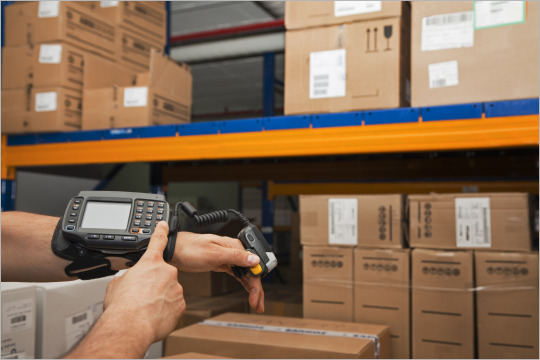Shipping plays a huge role in running an online business, one that can directly impact customer satisfaction and profitability. To optimize this aspect, you only need to streamline 3 key areas of the process:
- Speed
- Affordability
- Reliability
But here’s where most e-commerce businesses go wrong: they associate shipping optimization with just partnering with the cheapest carrier or slapping on a tracking number.
In reality, shipping optimization goes way beyond this. It includes streamlining the entire process from order to delivery, eliminating unnecessary costs, and improving efficiency without compromising on speed or accuracy. 3PL automation further takes this a step ahead with predictive analytics, real-time tracking, smart routing, and even automated packaging.
In this comprehensive article, we’ll explore the core components of shipping optimization, along with its benefits, actionable strategies, challenges, and more.
Key Components of Shipping Optimization
Here are the 5 key components of shipping optimization that can help you reduce costs, speed up deliveries, and enhance customer satisfaction:
1. Inventory Management
It’s pretty much a given, but we’ll say it anyway: You can’t ship something you don’t actually have. At the same time, you don’t want to stock up on items that aren’t in demand. Therefore, you need to keep your inventory in check so that you can know exactly what’s in stock, where it’s stored, and when to reorder.
And that’s not all. Effective inventory management goes beyond just counting SKUs. It includes demand forecasting, real-time updates, and smart restocking strategies. This helps you get complete visibility over your stock, prioritize high-impact items, and ensure orders are fulfilled without any hiccups.
2. Warehouse Management
Imagine shelving items randomly. Or having pickers walk 2 miles per shift to assemble orders. Sounds like a massive waste of time. Because it is. It will not only hamper efficiency but also impact your shipping timelines. And God forbid if there are any errors in picking or packing. You’ll end up spending unnecessary money on reshipping and dealing with frustrated, disappointed customers.
And so warehouse management is another critical component of shipping optimization that you shouldn’t ignore. And it’s no rocket science. With a good quality warehouse management system, you can easily:
- Determine the best areas to store items based on their velocities
- Cut down picking time
- Reduce the risk of errors
- Accelerate shipping
Plus, with automated picking technologies like conveyor belts, pick-to-light systems, and mobile robots, you can further shave minutes off every order.
3. Transportation Management
Once an order leaves the warehouse, you don’t have as much control over it. Therefore, your transportation strategy needs to be proactive, not reactive. Don’t just compare carriers based on pricing. Weigh in on other factors like delivery speed, service reliability, last-mile networks, and the ability to handle peak loads to select the right partner.
You can also use a dedicated transportation management system to compare shipping rates and delivery times. It removes the hassle of logging into multiple portals or guessing which carrier is best. Plus, beyond the price, it can help automatically generate shipping labels, assign tracking numbers, and push fulfillment updates in real time.
4. Returns Management
Returns aren’t exactly the most exciting part of running an online business. But smart businesses know that how you handle returns can directly impact your profitability and brand loyalty. According to Statista, 48% of U.S. shoppers have returned an online purchase in 2024. With such alarming numbers, having an optimized reverse logistics system is non-negotiable.
A simple way to manage returns is through a dedicated post-purchase automation platform like LateShipment.com. It helps you reduce processing time by 95% through automated, self-service return and exchange solutions. With LateShipment.com, you can:
- Access a branded returns and exchange portal
- Generate pre-paid return labels automatically
- Retain revenue through store credits, bonuses, and more
- Automate return status updates
5. Shipping Insurance
This is a vital component of shipping optimization but often gets overlooked. While most carriers offer basic liability, it is usually capped at a minimal amount and often comes with a lengthy claims process.
Therefore, it’s important to secure proper shipping insurance to get coverage against theft, loss, and damage to protect yourself and your customers. With a reliable provider, you can also enjoy automated insurance and claims management for a hassle-free experience.
Strategies for Effective Shipping Optimization
Whether you’re shipping 50 orders a day or 5,000, here are some proven shipping optimization strategies that’ll help you strengthen your shipping game:
1. Select the Right Packaging
Using the wrong-sized packaging is one of the most common mistakes e-commerce businesses make. If you’re using oversized boxes, you can rack up dimensional weight charges from carriers and end up wasting money on filler material. On the other hand, if you select a box that is too small, you immediately increase the chances of damage in transit, leading to more returns.
The solution? Establishing clear packaging SOPs and matching products to the most cost-efficient packaging type and size.
2. Leverage 3PL Automation
If you’re working with a third-party logistics partner, you’ll only go as far as their systems allow. This is why you need 3PL automation. It lets you sync inventory in real time, auto-assign carriers based on order rules, and even generate tracking updates automatically.
It provides a convenient way to forecast delivery windows, reduce human error, and scale your shipping capacity without needing to scale your team.
3. Streamline the Returns Process
How? The answer again lies in automation. Give customers a self-serve portal where they can choose return reasons, automate label generation, and provide instant updates. At the same time, make sure you route different types of returns to the appropriate warehouse or partner automatically.
For example, you might send restockable items to your main facility and damaged ones to a recycling center.
4. State Shipping Terms and Conditions Clearly
This may sound basic, but vague shipping terms can lead to unmet expectations, frustrated customers, and a spike in WISMO inquiries.
So, if you offer free shipping, say what the conditions are. If processing takes 1–2 days, be upfront. And don’t bury this information in the fine print. Display it prominently on your product pages, during checkout, and in your post-purchase emails.
5. Partner with a Reliable Post-Purchase Solutions Provider
Once a package leaves your warehouse, you’re at the mercy of carriers. Delays happen. Packages get lost. And customers blame you, not FedEx or UPS.
Post-purchase platforms like LateShipment.com help you optimize shipping performance after the order is placed. It integrates with up to 1200 carriers and apps, streamlines returns, and even automates shipping insurance so you can ensure a hassle-free post-purchase experience for your customers and yourself.
Benefits of Shipping Optimization
Let’s look at a few ways in which shipping optimization pays off:
1. Better Shipment Visibility
Shipment visibility isn’t just about knowing if an order was shipped. You also need to know what’s happening to that order in real time across every leg of its journey. When you’ve optimized your shipping operations, you get end-to-end visibility into the process, right from when an order is placed to when it’s delivered or returned to the warehouse.
This helps you stay on top of orders and lets your customer service team respond with confidence instead of guesswork.
2. Enhanced Customer Satisfaction
Shipping optimization directly impacts how customers perceive your brand. Offering accurate delivery windows, timely updates, and hassle-free returns increases their trust, turning them into loyal customers.
Moreover, by notifying them of potential delays early and providing alternate solutions, you can turn a frustrating moment into a positive experience, earning those extra brownie points.
3. Cost Savings
By optimizing your shipping operations, you’re not just saving money on shipping costs. You’re also saving on:
- Packaging by selecting the right-sized boxes
- Labor costs by automating label generation and cutting manual processes
- Customer support costs by reducing WISMO tickets
This results in happier, satisfied customers who are more likely to stay and shop again. And it’s cheaper to retain existing customers than to acquire new ones any day.
Challenges in Implementing Shipping Optimization
Shipping optimization sounds great, in theory. But in reality, the road to success is a little bumpier. Here are some of the biggest challenges businesses face when optimizing their shipping operations:
1. Poor Inventory and Demand Forecasting
Inventory forecasting isn’t just about looking at last month’s sales and crossing your fingers. You need to understand seasonal trends, location-specific demands, and evolving consumer preferences. If your forecasting is incorrect, it doesn’t just hurt your inventory but can also increase transit time and shipping costs.
So, if you’re still relying on outdated systems and spreadsheets, it might be worth considering investing in demand forecasting tools that use machine learning models, past data, and real-time inputs to make accurate predictions.
Read More: Top Shipping and Inventory Management Tools for SMBs
2. Managing High Return Rates
Returns aren’t just a customer service issue. They’re a logistics problem. And a costly one. E-commerce returns can range anywhere from 25–40%, depending on the industry. If you don’t have a solid plan for inspecting, restocking, or refurbishing returned items quickly, you’ll end up sitting on dead stock and killing your margins.
To avoid this, you need to focus on two key areas:
- Making the returns process seamless to retain customer satisfaction
- Keeping it efficient enough to avoid unnecessary logistics costs
3. Lack of Real-Time Shipment Visibility
Sure, not knowing where a package is or why it’s delayed can be frustrating. But it was also expensive. You see, every WISMO ticket adds strain to your customer service team. And when customers don’t get proactive updates, their trust in your brand will likely tank, even if the delay wasn’t your fault. Plus, if you’re working with multiple carriers, each with its own tracking system, it doesn’t help either.
This is where partnering with reliable post-purchase solution providers like LateShipment.com can give you an edge. They centralize tracking across carriers, monitor delivery exceptions, and even help you recover refunds when carriers miss SLA commitments. This gives you real-time visibility, helping you act promptly if something goes wrong.
Case Studies and Examples
Let’s look at some real-world case studies of shipping optimization to see how it helps e-commerce brands drive success:
1. Curiada
Curiada is an online marketplace for distinctive spirits. It was struggling with disjointed shipping data from various retail partners, which left its customers unaware of when their orders would arrive. LateShipment.com helped Curiada integrate automated shipping notifications, a dedicated branded tracking page, and a smart helpdesk widget to bring all their shipping data together.
This not only gave them a clear, real-time view of every shipment but also significantly reduced support tickets and streamlined fulfillment delays.
2. Northwoods Humidors
Northwoods Humidors is a retailer of premium humidors and cigar accessories. However, the brand faced significant revenue loss from high return rates due to a clunky, manual process. By implementing LateShipment.com, they streamlined returns with a self-serve portal, automated return approvals, and seamless integration with Shipstation for prepaid labels.
This helped them save 30.4% of potential lost revenue while also boosting customer communication and reducing support workload.
3. PacknWood
PacknWood, a leader in eco-friendly tableware, struggled with confusing tracking and unclaimed refunds due to using multiple carriers. With LateShipment.com, they synced order data, automated shipping updates, and provided a branded tracking portal, which cut down customer inquiries significantly.
On top of that, automated invoice audits and refund claims helped recover the money lost due to shipping delays, saving precious support time.
The End Note
Deploying smart shipping optimization techniques can help you elevate every step of the customer journey. From smarter packaging and efficient inventory management to leveraging 3PL automation and streamlining returns, every strategy helps you turn standard shipping into a competitive edge.
See how these strategies can transform your shipping process. Book a demo with LateShipment.com and start shipping smarter today.








